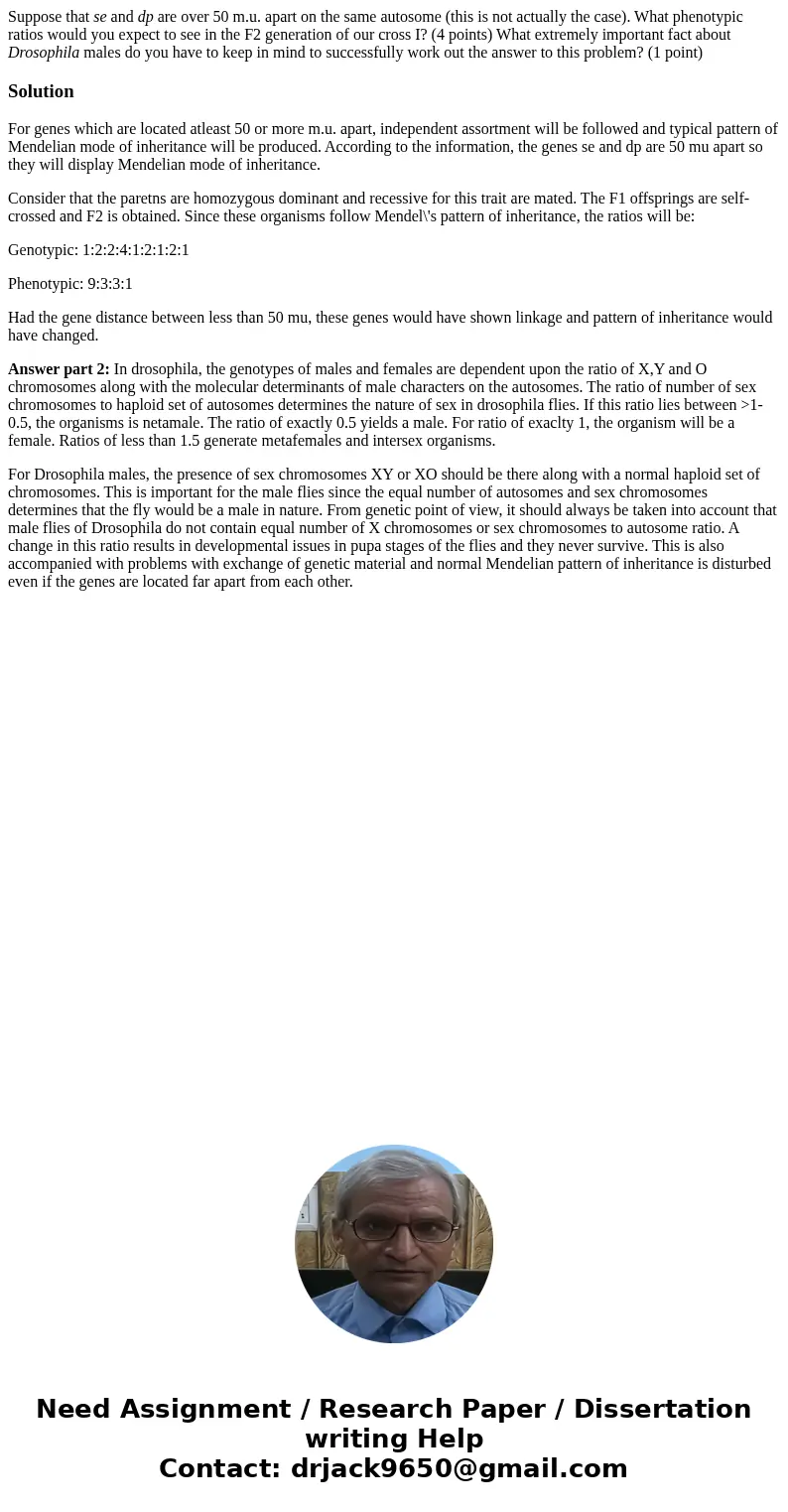Suppose that se and dp are over 50 mu apart on the same auto
Suppose that se and dp are over 50 m.u. apart on the same autosome (this is not actually the case). What phenotypic ratios would you expect to see in the F2 generation of our cross I? (4 points) What extremely important fact about Drosophila males do you have to keep in mind to successfully work out the answer to this problem? (1 point)
Solution
For genes which are located atleast 50 or more m.u. apart, independent assortment will be followed and typical pattern of Mendelian mode of inheritance will be produced. According to the information, the genes se and dp are 50 mu apart so they will display Mendelian mode of inheritance.
Consider that the paretns are homozygous dominant and recessive for this trait are mated. The F1 offsprings are self-crossed and F2 is obtained. Since these organisms follow Mendel\'s pattern of inheritance, the ratios will be:
Genotypic: 1:2:2:4:1:2:1:2:1
Phenotypic: 9:3:3:1
Had the gene distance between less than 50 mu, these genes would have shown linkage and pattern of inheritance would have changed.
Answer part 2: In drosophila, the genotypes of males and females are dependent upon the ratio of X,Y and O chromosomes along with the molecular determinants of male characters on the autosomes. The ratio of number of sex chromosomes to haploid set of autosomes determines the nature of sex in drosophila flies. If this ratio lies between >1-0.5, the organisms is netamale. The ratio of exactly 0.5 yields a male. For ratio of exaclty 1, the organism will be a female. Ratios of less than 1.5 generate metafemales and intersex organisms.
For Drosophila males, the presence of sex chromosomes XY or XO should be there along with a normal haploid set of chromosomes. This is important for the male flies since the equal number of autosomes and sex chromosomes determines that the fly would be a male in nature. From genetic point of view, it should always be taken into account that male flies of Drosophila do not contain equal number of X chromosomes or sex chromosomes to autosome ratio. A change in this ratio results in developmental issues in pupa stages of the flies and they never survive. This is also accompanied with problems with exchange of genetic material and normal Mendelian pattern of inheritance is disturbed even if the genes are located far apart from each other.

 Homework Sourse
Homework Sourse